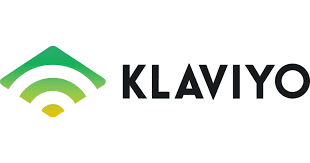Welcome to the ever-evolving world of email marketing in 2024, where the choices are abundant, and the competition for your attention is fierce. In this comprehensive comparison, we’re going to dive deep into two prominent email marketing tools: Klaviyo and Emma. Both are well-regarded in the industry, but the burning question is, which one deserves the title of the best email marketing tool for 2024? Let’s embark on this journey to discover the answer.
| Klaviyo | Emma |
|---|---|
 |  |
| G2 Score – 4.6 out of 5 stars | G2 Score – 4.0 out of 5 stars |
| TrustRadius Score – 9.0 out of 10 | TrustRadius Score – 8.6 out of 10 |
Deliverability: Ensuring Your Emails Land in the Inbox
Email deliverability is a crucial aspect of any email marketing campaign. After all, your beautifully crafted emails won’t yield results if they end up in the dreaded spam folder. Both Klaviyo and Emma understand the significance of deliverability, but let’s see how they stack up.
Klaviyo: Prioritizing Inbox Placement
Klaviyo takes email deliverability seriously, offering robust tools and features to ensure your emails reach the inbox. The platform provides email authentication options like DKIM (DomainKeys Identified Mail) and SPF (Sender Policy Framework) to enhance sender verification. This helps in establishing trust with email service providers and ISPs.
Furthermore, Klaviyo actively manages email bounces and unsubscribes to maintain a clean sender reputation. It also offers list hygiene checks, ensuring that your email list is free from invalid or dormant addresses. This proactive approach to deliverability minimizes the chances of your emails being marked as spam.
Emma: Focusing on Deliverability Best Practices
Emma, too, places a strong emphasis on email deliverability. The platform provides guidance and best practices to help users maintain a high sender reputation. Emma advises on avoiding spam trigger words, optimizing email content, and adhering to industry standards.
While Emma may not offer the same level of advanced tools as Klaviyo, it empowers users with knowledge and resources to improve deliverability. The platform actively monitors for potential issues that could affect inbox placement, helping users make informed decisions about their email campaigns.
Deliverability: A Common Goal
In terms of deliverability, both Klaviyo and Emma share a common goal: to ensure your emails land in the inbox. While Klaviyo offers a more extensive set of tools and features, Emma focuses on educating users about deliverability best practices. The choice between the two may depend on your level of expertise and the specific needs of your email campaigns.
In summary, both Klaviyo and Emma prioritize email deliverability, but the approach they take differs. Klaviyo offers a more hands-on approach with advanced tools, while Emma equips users with knowledge to make deliverability improvements.
Email Design and Customization: Crafting Engaging Campaigns
Designing visually appealing and engaging email campaigns is paramount to capturing your audience’s attention. Let’s explore how Klaviyo and Emma compare in terms of email design and customization.
Klaviyo: Creative Freedom with Advanced Customization
Klaviyo excels in providing a high degree of customization for email design. Its drag-and-drop email builder is intuitive and allows you to create responsive and visually appealing emails effortlessly. With a wide variety of templates and the ability to fine-tune every element – from colors and fonts to layouts and images – Klaviyo empowers you to create emails that align seamlessly with your brand identity.
This high level of customization is especially beneficial for brands that prioritize uniqueness and creativity in their emails. Klaviyo’s tools are sophisticated enough for experienced marketers yet user-friendly for beginners, making it a versatile choice for various businesses.
Emma: User-Friendly Design for Effortless Campaigns
Emma takes a straightforward approach to email design, offering a range of pre-designed templates that are easy to customize. While it may not provide the same depth of customization as Klaviyo, it covers the essential design needs for most email marketing campaigns. Emma’s templates are designed to be visually appealing and responsive, ensuring that your emails look great on any device.
Emma’s strength lies in its simplicity and efficiency. It’s an ideal solution for businesses that need to create professional-looking emails quickly and without a steep learning curve.
Design and Customization: Tailoring to Your Needs
If you’re looking for a tool that offers extensive customization options and the ability to create highly personalized, brand-centric emails, Klaviyo is the better choice. Its advanced design features cater to businesses looking to make a strong visual impact with their emails.
On the other hand, if you value efficiency and ease of use in email design, and need a tool that still delivers quality results, Emma is a great fit. Its user-friendly design process makes it suitable for those who want to create effective emails without extensive customization.
In summary, both Klaviyo and Emma offer robust capabilities in email design and customization, but they cater to different preferences in terms of design complexity and user experience.
Automation and Personalization: Nurturing Customer Relationships
Email marketing isn’t just about sending messages; it’s about building relationships with your audience. Automation and personalization play a pivotal role in achieving this. Let’s delve into how Klaviyo and Emma handle automation and personalization.
Klaviyo: Advanced Automation for Precision
Klaviyo is renowned for its robust automation capabilities. The platform allows you to create intricate automation workflows based on customer behavior, triggers, and segmentation. Whether it’s sending personalized product recommendations, cart abandonment emails, or post-purchase follow-ups, Klaviyo’s automation can handle it all.
The platform’s segmentation options are particularly impressive, enabling you to target specific customer groups with highly personalized content. Klaviyo also offers dynamic content blocks, allowing you to tailor email content based on individual customer data, such as location or purchase history.
Emma: Simplified Automation for Efficiency
Emma offers automation features designed for efficiency and ease of use. While it may not provide the same level of complexity as Klaviyo, it covers essential automation needs for most businesses. Emma’s automation workflows are intuitive and allow you to set up email series, drip campaigns, and automated responses with ease.
For businesses that want to automate routine email tasks without delving into intricate workflows, Emma’s automation options are a valuable asset. It simplifies the process of sending welcome emails, birthday greetings, and event reminders.
Automation and Personalization: Finding the Balance
The choice between Klaviyo and Emma in terms of automation and personalization depends on the level of complexity you require. Klaviyo is the go-to option for businesses seeking advanced automation and precise personalization. Its capabilities are well-suited for e-commerce businesses that want to create highly tailored customer journeys.
On the other hand, Emma offers a streamlined approach to automation, making it accessible for businesses looking to automate essential email communications without the complexity of intricate workflows.
In summary, both Klaviyo and Emma offer automation and personalization features, but the extent of their capabilities differs. Your choice should align with your specific automation needs and your comfort level with the complexity of workflows.
Reporting and Analytics: Measuring Success
Understanding the impact of your email campaigns is essential for making informed marketing decisions. Let’s compare how Klaviyo and Emma handle reporting and analytics to help you measure the success of your email efforts.
Klaviyo: In-Depth Analytics for Data Enthusiasts
Klaviyo provides in-depth analytics that cater to data enthusiasts. The platform offers a wide range of metrics and insights, allowing you to track email performance with precision. You can measure key metrics such as open rates, click-through rates, conversion rates, and revenue generated from email campaigns.
What sets Klaviyo apart is its ability to provide insights on customer behavior beyond email interactions. It allows you to track website visits, product views, and purchases tied to specific email campaigns. This integration of email and e-commerce data offers a holistic view of customer engagement and helps you make data-driven decisions.
Emma: Simplified Analytics for Quick Insights
Emma offers a user-friendly approach to reporting and analytics. Its dashboard provides a snapshot of essential metrics, making it easy to grasp the performance of your email campaigns at a glance. You can view open rates, click-through rates, and engagement trends over time.
While Emma’s analytics may not offer the same depth as Klaviyo, it covers the fundamental metrics needed to assess email campaign effectiveness. This simplicity is beneficial for businesses that prefer a straightforward approach to tracking their email performance.
Reporting and Analytics: Tailoring to Your Needs
The choice between Klaviyo and Emma in terms of reporting and analytics depends on your data requirements and your comfort level with analytics tools. Klaviyo’s advanced analytics are ideal for businesses that thrive on data-driven insights and need to track the impact of email campaigns on e-commerce sales.
Conversely, Emma provides accessible reporting for businesses that value quick insights and a simplified view of email performance. It’s a suitable choice for those who want a streamlined approach to tracking email success.
In summary, both Klaviyo and Emma offer reporting and analytics capabilities, but the depth and complexity of their offerings differ. Your choice should align with your level of comfort with data analysis and your specific reporting needs.

Related: Check out our free SEO suite

Customer Support and Resources: Your Partner in Success
Effective customer support and access to valuable learning resources can make a significant difference in your email marketing journey. Let’s explore how Klaviyo and Emma compare in providing support and educational materials to their users.
Klaviyo: Comprehensive Support and Extensive Resources
Klaviyo is known for its high-quality customer support. It offers various channels, including email, live chat, and phone support, ensuring that help is readily available when you need it. Users often highlight the responsiveness and expertise of Klaviyo’s support team, making the platform user-friendly, especially for businesses new to email marketing.
In terms of educational resources, Klaviyo shines with an extensive library of guides, how-to articles, video tutorials, and webinars. These resources cover a wide range of topics, from basic setup to advanced marketing strategies, making them invaluable for users at all levels. Whether you’re a beginner or an advanced user, Klaviyo’s resources can help enhance your email marketing skills.
Emma: Efficient Support and Helpful Guides
Emma offers efficient and reliable customer support through channels like email and live chat. While the support might not be as extensive as Klaviyo’s in terms of channels, it is competent and generally well-received by users. Emma’s support team is equipped to assist with a range of queries, ensuring users can navigate and utilize the platform effectively.
When it comes to educational resources, Emma provides a solid collection of guides, FAQs, and tutorials. These resources are designed to help users understand the basics of the platform and get the most out of their email marketing campaigns. While the library might not be as comprehensive as Klaviyo’s, it covers all the essential aspects and is a valuable resource for new users.
Support and Resources: Tailoring to Your Needs
If you’re looking for a platform with robust customer support and a wide array of educational materials, Klaviyo is an excellent choice. Its comprehensive support system and extensive learning resources make it ideal for businesses seeking to deepen their knowledge and skills in email marketing.
On the other hand, if you prefer a platform with efficient, straightforward support and essential resources to get you started, Emma is a great fit. Its user-friendly approach and helpful guides make it suitable for businesses looking for simplicity and efficiency.
Both Klaviyo and Emma offer effective customer support and valuable resources, but the choice will depend on the level of support you require and the complexity of the features you plan to use.
Pricing and Affordability: Finding the Right Fit for Your Budget
When it comes to choosing an email marketing tool, budget considerations play a significant role. Let’s compare the pricing and affordability of Klaviyo and Emma to help you find the right fit for your business.
| Klaviyo | Free Plan: Allows up to 250 contacts and 500 email sends, with Klaviyo branding on emails. Email Plans: Pricing starts based on the number of contacts. For example, for up to 500 contacts, the cost is around $20 per month. Includes email and SMS capabilities, segmentation, and automation. Pricing scales with the number of contacts. SMS and Email Combined Plans: Offers combined packages for businesses that want to use both email and SMS marketing. Pricing is based on the number of contacts and SMS messages sent. |
| Emma | Pricing is typically tiered based on features and list size: Pro Plan: Offers automation, segmentation, and analytics. Pricing usually starts at around $89/month. Plus Plan: Includes additional features like landing pages and A/B testing. Pricing is higher and usually requires a quote from Emma. Enterprise Plan: Custom pricing for advanced needs like custom integrations and dedicated support. |
Klaviyo: Scalable Pricing for Growing Businesses
Klaviyo offers a pricing model that scales with your business. While it may not be the most budget-friendly option for small businesses, it provides value as your email marketing needs expand. The pricing is based on the number of contacts in your list, making it suitable for businesses with varying audience sizes.
One of Klaviyo’s standout features is its free tier, which allows you to get started without any upfront costs. However, as your list grows and you require advanced features, the pricing can increase significantly. It’s important to consider your long-term email marketing goals when evaluating Klaviyo’s pricing.
Emma: Competitive Pricing for Budget-Conscious Businesses
Emma offers competitive and transparent pricing, making it an attractive choice for budget-conscious businesses. The pricing tiers are based on the number of contacts you have, making it easy to budget for your email marketing needs. Emma also offers a 20% discount for nonprofits, providing additional value for organizations with a social mission.
While Emma’s pricing is generally more affordable than Klaviyo’s, it still provides essential email marketing features and automation. This makes it a cost-effective solution for businesses looking to maximize their budget without compromising on quality.
Pricing and Affordability: Aligning with Your Budget
The choice between Klaviyo and Emma in terms of pricing depends on your budget and long-term growth plans. Klaviyo is well-suited for businesses with a budget to invest in advanced email marketing features and scalability. It’s a powerful tool for e-commerce businesses and those with ambitious email marketing goals.
On the other hand, Emma offers a cost-effective solution that caters to businesses looking for affordability without sacrificing essential email marketing capabilities. It’s an excellent choice for small to medium-sized businesses and nonprofits looking to maximize their marketing budget.
In summary, Klaviyo and Emma offer different pricing structures to accommodate various budgets and business sizes. Your decision should align with your financial resources and your email marketing objectives.
Integration and Compatibility: Connecting Your Tools
The ability to integrate your email marketing platform with other tools and services can streamline your marketing efforts. Let’s compare how Klaviyo and Emma fare in terms of integration and compatibility.
Klaviyo: Extensive Integrations for a Connected Ecosystem
Klaviyo offers a wide range of integrations with popular e-commerce platforms, CRMs, analytics tools, and more. It has native integrations with platforms like Shopify, Magento, WooCommerce, and BigCommerce, making it a preferred choice for e-commerce businesses. Additionally, Klaviyo provides an open API that allows for custom integrations with other tools and services.
The platform’s extensive integration options enable you to sync customer data, track conversions, and personalize email campaigns based on customer behavior from various sources. This seamless connectivity enhances your marketing automation capabilities and provides a holistic view of your customer interactions.
Emma: Integration with Essential Tools
Emma provides integration options with key tools and services commonly used in marketing. While it may not offer as many integrations as Klaviyo, it covers essential bases with integrations like Salesforce, Shopify, and other CRM and e-commerce platforms. Emma also offers an open API, allowing for custom integrations when needed.
For businesses that require basic integrations to connect their email marketing with other systems, Emma provides suitable options. It’s especially suitable for small to medium-sized businesses that may not need a wide range of integrations.
Integrations: Meeting Your Needs
Your choice between Klaviyo and Emma in terms of integration and compatibility will depend on the specific tools and platforms you use in your marketing stack. If you require a broad range of integrations and extensive connectivity with e-commerce and CRM platforms, Klaviyo is the superior choice.
On the other hand, if you need essential integrations and a user-friendly approach to connecting your email marketing with other tools, Emma provides suitable options.
In summary, both Klaviyo and Emma offer integration capabilities, but Klaviyo excels in providing a more extensive range of integrations, making it ideal for businesses with complex marketing technology stacks.
Conclusion
As we near the end of this comparison between Klaviyo and Emma, it’s clear that both email marketing platforms have their unique strengths and are well-suited to different business needs. Klaviyo stands out with its advanced automation, comprehensive analytics, and robust e-commerce integrations. It’s an excellent choice for e-commerce businesses and marketers seeking intricate customization and deep customer insights. While it may not be the most budget-friendly option, its scalability aligns with growing businesses. Emma, on the other hand, shines with its user-friendly design, competitive pricing, and efficient support. It’s ideal for budget-conscious businesses and nonprofits looking for an affordable yet capable email marketing solution. Emma’s simplicity and effectiveness make it a valuable choice for businesses of various sizes.
When it comes to deliverability, both platforms prioritize inbox placement, providing tools to maintain a good sender reputation. The success here ultimately depends on adherence to email best practices and content quality. In terms of email design and customization, Klaviyo offers extensive creative freedom with advanced customization options, catering to brands looking for unique, visually appealing emails. Emma provides a streamlined approach to email design, making it accessible for businesses that value efficiency. Automation and personalization are handled differently, with Klaviyo offering advanced automation for precision and Emma focusing on simplified automation for efficiency. Your choice should align with your automation needs and complexity preferences.
In reporting and analytics, Klaviyo offers in-depth insights for data enthusiasts, while Emma provides simplified analytics for quick insights. The depth of analytics you require should guide your decision. Customer support and resources are robust in both platforms, with Klaviyo offering comprehensive support and extensive educational materials, while Emma provides efficient support and valuable guides. Finally, pricing and affordability differ, with Klaviyo offering scalability for growing businesses and Emma providing competitive pricing for budget-conscious organizations.
In conclusion, the choice between Klaviyo and Emma comes down to your specific business needs, budget, and growth plans. Consider the strengths of each platform and align them with your email marketing objectives to make the right decision in 2024.
Read Next:
- The Role of Mobile Optimization in Email Marketing Success
- Email Marketing Metrics that Matter: Tracking Success and ROI
- Harnessing the Power of Interactive Content in Email Campaigns
- The Future of Email Marketing: Predictions and Trends to Watch
- Segmentation in Email Marketing: Targeting the Right Audience with the Right Message






















Comments are closed.